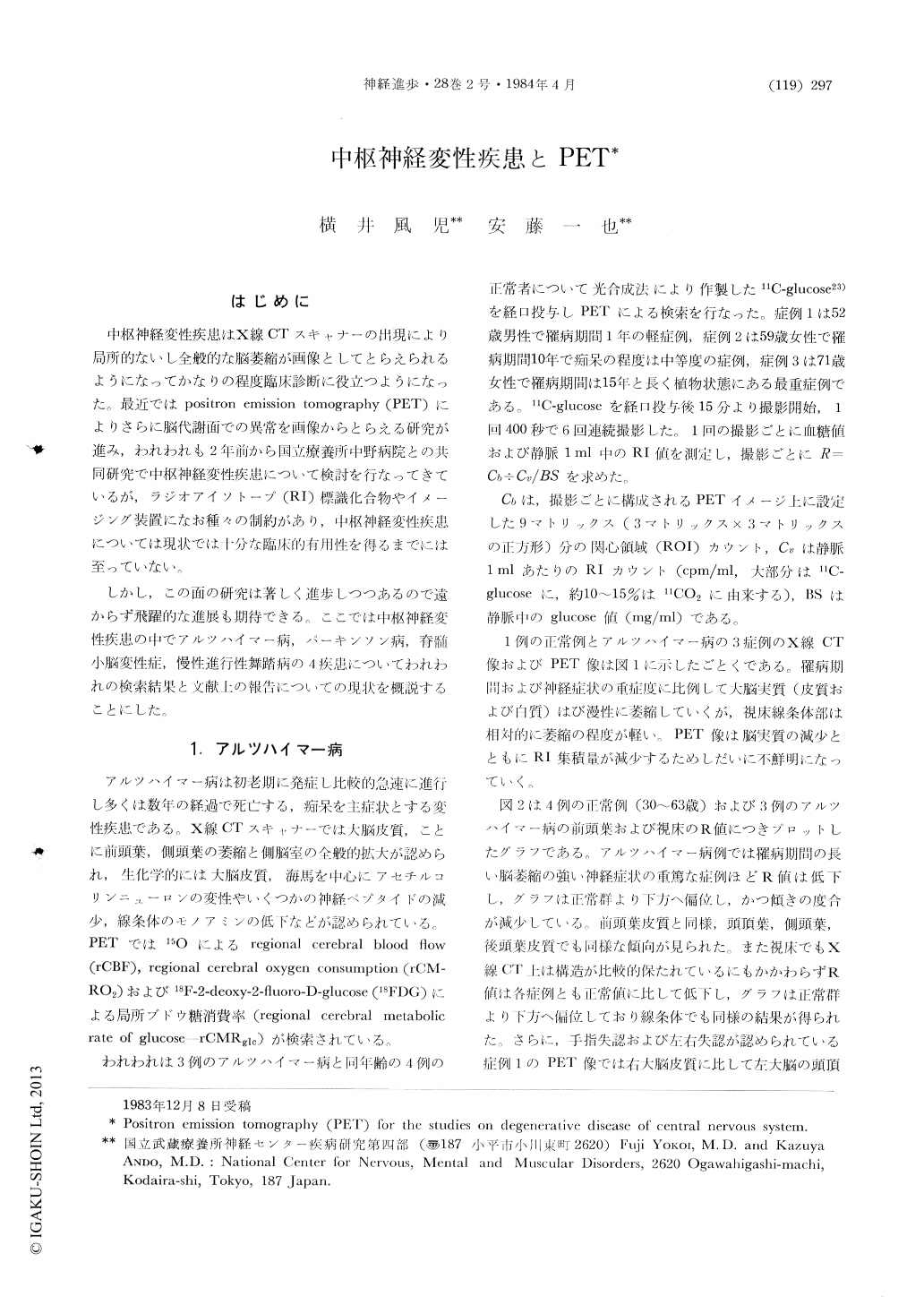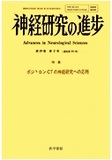Japanese
English
- 有料閲覧
- Abstract 文献概要
- 1ページ目 Look Inside
はじめに
中枢神経変性疾患はX線CTスキャナーの出現により局所的ないし全般的な脳萎縮が画像としてとらえられるようになってかなりの程度臨床診断に役立つようになった。最近ではpositron emission tomography(PET)によりさらに脳代謝面での異常を画像からとらえる研究が進み,われわれも2年前から国立療養所中野病院との共同研究で中枢神経変性疾患について検討を行なってきているが,ラジオアイソトープ(RI)標識化合物やイメージング装置になお種々の制約があり,中枢神経変性疾患については現状では十分な臨床的有用性を得るまでには至っていない。
しかし,この面の研究は著しく進歩しつつあるので遠からず飛躍的な進展も期待できる。ここでは中枢神経変性疾患の中でアルツハイマー病,パーキンソン病,脊髄小脳変性症,慢性進行性舞踏病の4疾患についてわれわれの検索結果と文献上の報告についての現状を概説することにした。
Abstract
The use of PET for detecting the brain distri-bution and kinetics of carbon 11 labelled organic molecules, make possible the in vivo study of brain metabolism. We have used this method to study the metabolism of 11C-glucose or 11CO2 in the brain of patients with presenile dementia, Parkinson's disease, spinocerebellar degeneration (SCD) and chorea.
11C-glucose, prepared by photosynthesis, was used as a positron emitting tracer for a glucose utilization. Within 1-2 minutes just after 11CO2 was inhalated, the pattern of PET seemed to be affected with cerebral blood flow.

Copyright © 1984, Igaku-Shoin Ltd. All rights reserved.


